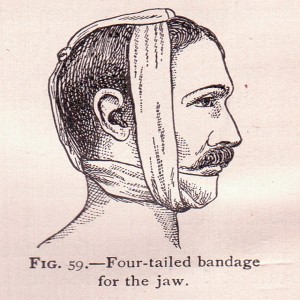Serum Bone-Specific Alkaline Phosphatase as an indicator of the quantity of callus formation in mandibular fracture patients seen in a Nigerian Teaching Hospital

Accepted: 20 March 2023
All claims expressed in this article are solely those of the authors and do not necessarily represent those of their affiliated organizations, or those of the publisher, the editors and the reviewers. Any product that may be evaluated in this article or claim that may be made by its manufacturer is not guaranteed or endorsed by the publisher.
Authors
It is important to evaluate the level of bone-specific alkaline phosphatase as it relates to the quantity of callus formed in mandibular fracture healing. The objective of the present study was to assess Serum Bone-Specific Alkaline Phosphatase (BsALP) as an indicator of callus formation in patients with mandibular fracture and determine the relationship between BsALP and callus formation using two treatment methods. Fifty-five patients with isolated mandibular fractures were enrolled. BsALP was measured at presentation, 3rd and 6th week. The patients were recruited into two treatment groups: Closed Reduction with Mandibulomaxillary Fixation (MMF) and Open Reduction and Internal Fixation (ORIF). The Callus Index was measured at 3rd and 6th week after treatment using digital postero-anterior view of the jaws on DICOM viewer software. The mean value of BsALP was 26.2±9.5 ng/mL. BsALP concentration in patients with double site fractures was higher than those with a single fracture, p=0.102. Peak serum BsALP observed in the 3rd week post-intervention was (28.1±8.2 ng/mL). Statistically significant differences were observed between the BsALP concentration in the 3rd and 6th week, and between BsALP concentration at presentation and 6th week, p<0.001, respectively. There was no significant correlation between the Callus Index and mean serum BsALP at 6 weeks (r=-0.08, p=0.580). MMF treatment group had higher levels of serum BsALP compared with ORIF group in the 3rd week (p=0.14) and in the 6th week (p=0.18). BsALP is an indicator of the amount of callus formed in patients treated for mandibular fractures. Hence, it could be used as an adjunct to monitor the healing of mandibular fractures.
How to Cite

This work is licensed under a Creative Commons Attribution-NonCommercial 4.0 International License.
PAGEPress has chosen to apply the Creative Commons Attribution NonCommercial 4.0 International License (CC BY-NC 4.0) to all manuscripts to be published.

 https://doi.org/10.4081/acbr.2023.307
https://doi.org/10.4081/acbr.2023.307



